
Composting is an essential natural process, without which we wouldn’t be able to grow our food. Composting is about accelerating nature’s cycles, and one of the key ways is to recycle at home, allowing us to lessen our impact on the environment by reducing or even eliminating personal food waste. It is also a wonderful way to make use of the natural resources at our disposal.
Why Composting Is a Good Idea
Composting at home is a great idea because it:
- Reduces food waste and organic garden waste from our yards.
- Provides us with our own source of fertile compost.
- Makes it easier to grow our own food, to protect the soil, and to live a more eco-friendly way of life.
👉 The Waste and Resources Action Programme (WRAP) estimates that UK food waste is associated with greenhouse gas emissions of over 20 million tonnes, with approximately three-quarters of those arising in the UK.
In 2017, government statistics showed that 7.4 million tonnes of biodegradable municipal waste was sent to UK landfill. This is just 21% of the total from 1995 – yet though this shows significant improvements with food waste and other biodegradable waste, there is still a long way to go.
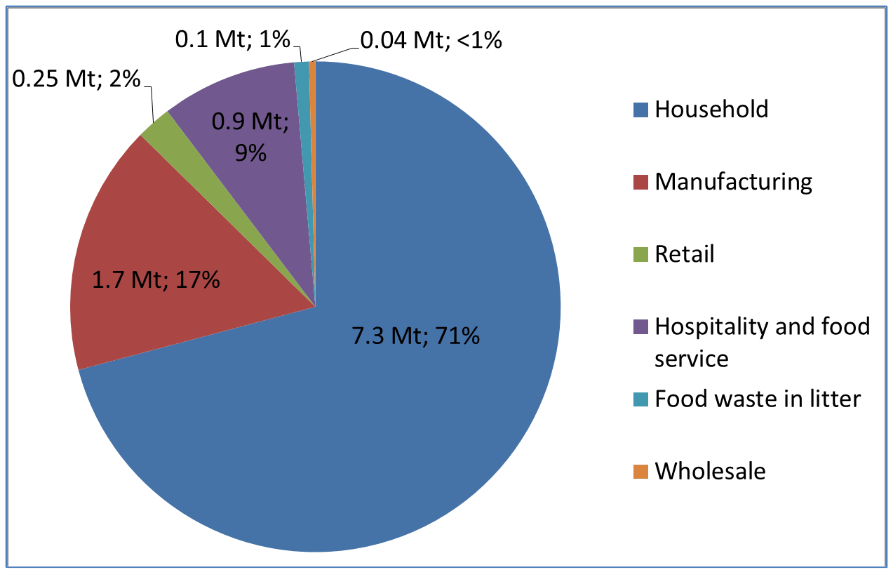
The amount of food waste sent for composting (including anaerobic digestion) increased by 8.7 percent in 2017 (up to 386,000 tonnes from 355,000 in 2016), but remains a very small proportion of total waste collected (2 percent).
💡 Home composting can play an important role in lessening the strain on municipal waste management. Not only will it significantly reduce the food waste and other organic waste we generate, it can also reduce the carbon cost of transportation, and of dealing with waste away from the home.
Composting in Cities
If you live in a city or town, you may not be creating compost for your own garden, since outside space could be limited or nonexistent – but that doesn’t mean you can’t compost food waste and other suitable materials from your home. As you will learn below, there are plenty of ways to compost indoors. If you don’t have a garden, the main focus of your composting will inevitably be waste reduction.
Food waste from cities and populous areas is a massive problem. Many municipalities have no adequate system to deal with organic waste effectively; food waste often ends up in landfill, where, mixed with other refuse, can be a major problem for the environment.
👉 As an individual, the first and most important step is to reduce the amount of food you consume, and to avoid wasting it.
If you live in an urban area, next, determine whether or not a system is available to deal with food waste. Certain local authorities divert food waste into a separate waste stream, where it is either composted for the municipality, or for community use, or sent to digestion plants where it is turned into fuel and farming fertilisers.
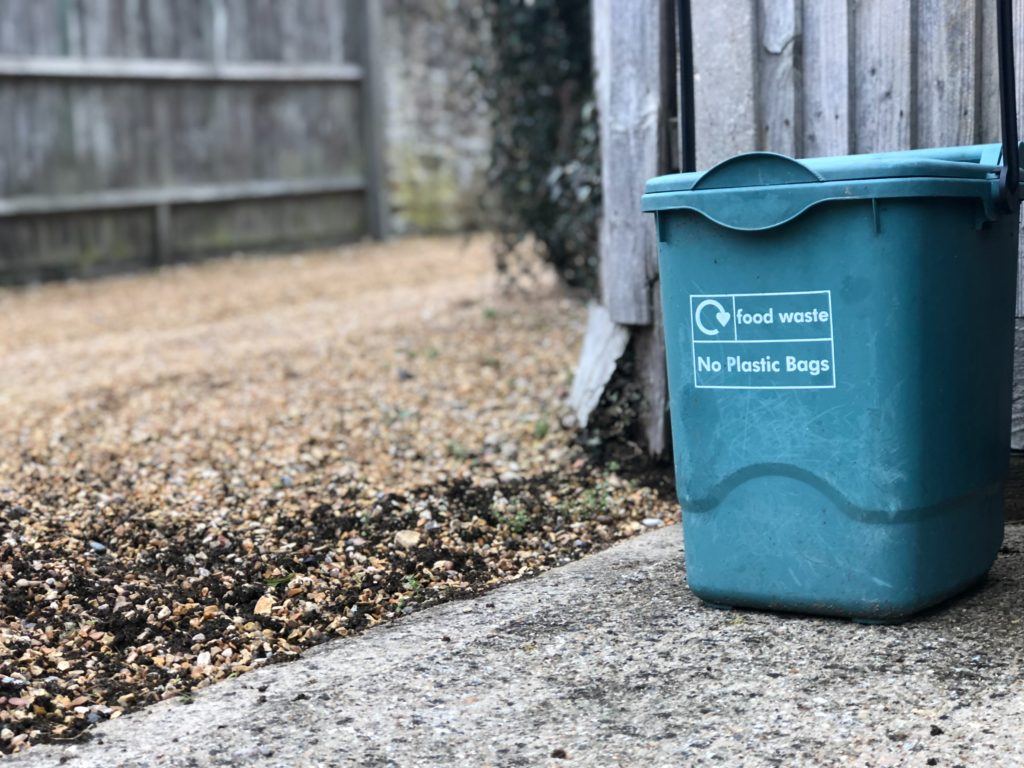
If such a system is not in place where you live, home composting is, of course, even more important. But even if you have a food waste bin, it may still be a good idea to compost at home. Information on how you might use home-made compost (even without a garden) can be found a little later in this article.
Composting in the Countryside
If you live in the countryside, or a less built-up area, and have a garden, composting there or at home is something with which you may already be familiar. There may be fewer restrictions in terms of space in a more rural location – but composting in these places can bring other challenges.
Some governments and authorities subsidise waste/composting bins or containers, providing them free of charge. Elsewhere, you may be left to fend for yourself; certain local authorities do not provide food waste bins to rural addresses, assuming that locals will already be composting their waste.
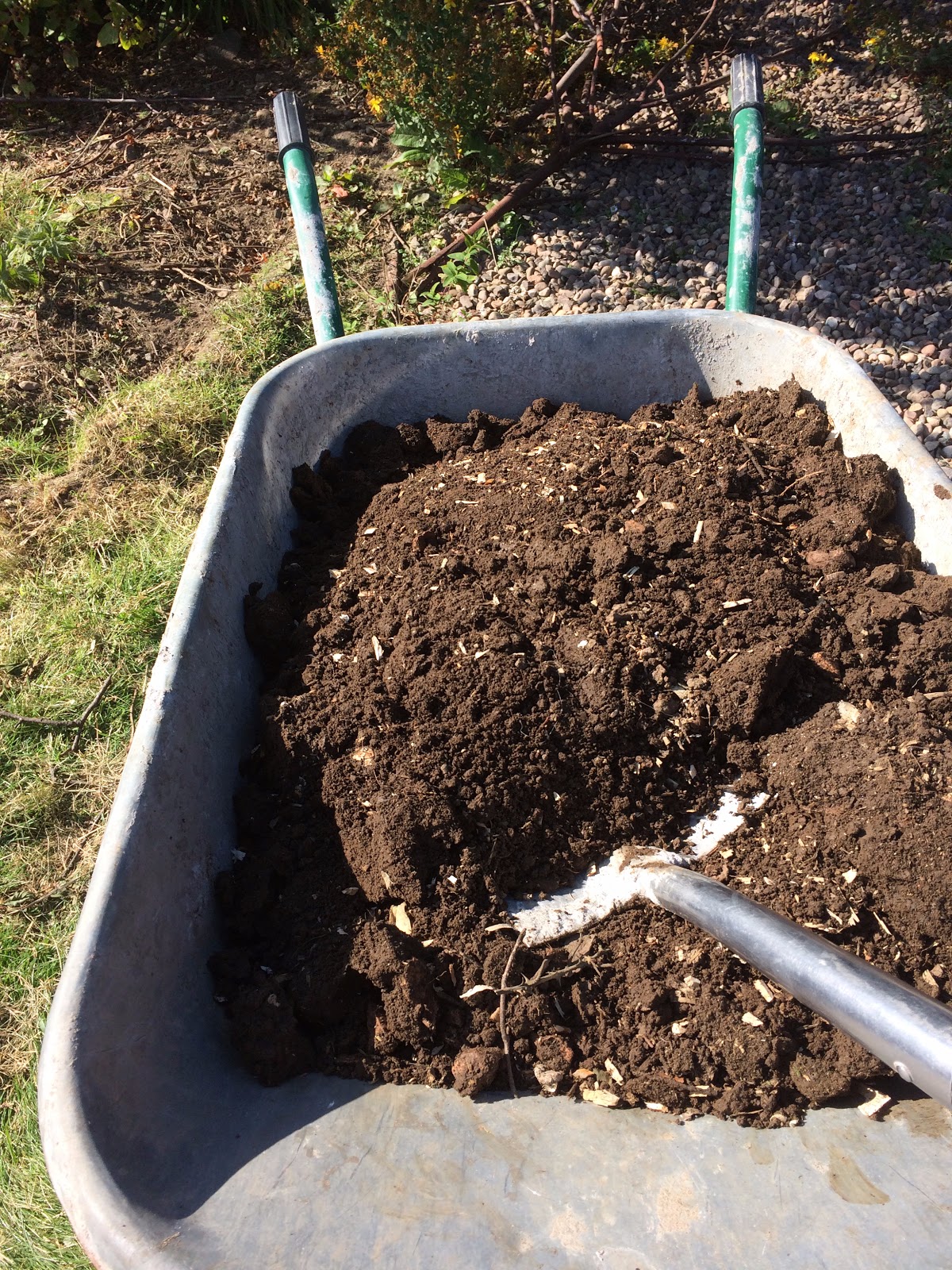
If you have a very large garden, the main challenge will be to produce enough biomass to feed a composting system, in order to generate enough compost to go around and enrich your garden soil. But when you garden organically and aim for high biodiversity, this can become easier than you might imagine.
Those living rurally are often lucky enough to be able to become almost entirely self-sufficient in terms of producing fresh fruit and vegetables. But it does take some effort to make the most of the fortunate circumstances in which you find yourself.
The Fundamentals of Composting
Wherever you are composting, it is important to understand the fundamentals of the process, and of what you are trying to achieve. It’s difficult to get good results if you are working blind, so before we discuss different methods for composting, let’s get back to basics and look at what composting is, and what is required.
A Living System
The first thing to remember is that a composting system is a living system. A compost heap or composting container is teeming with micro-organisms, without which the decomposition process would not function so effectively. Composting can also depend on the agency of other living creatures, such as worms.
As with any living creatures, these composting ‘helpers’ have certain requirements. Exactly what conditions support a balanced compost system will depend on the method being used, but if you create the perfect environment for micro-organisms and other helpful creatures, they will arrive, and thrive. This will help you create great quality compost. 🐌
Aerobic or Anaerobic (With or Without Oxygen)
Composting can occur in two ways: decomposition with oxygen (aerobic), or without oxygen (anaerobic). When we create compost at home, we are generally aiming for aerobic decomposition, since oxygen is used by aerobic microbes in order to process waste efficiently and effectively.
Anaerobic composting (or digestion) can also effectively break down organic material, but unfortunately does so in a way that can be more harmful to the planet. Aerobic decomposition has just three main by-products: water, heat, and carbon dioxide (the latter of which can be more than made up for with garden planting). Anaerobic decomposition, on the other hand, produces methane, a far more potent greenhouse gas. (This also occurs, on a larger scale, when food waste and other organic matter ends up in landfill.)
Nevertheless, anaerobic digestion can be a solution for large-scale composting, since methane can be harnessed usefully, for example in the creation of Biogas. Commercial processes of this kind can also produce digestate – a nutrient-rich slurry for use on farm fields. In areas where home composting is not effective at keeping food waste from landfill sites, such operations could be a valuable alternative.
However, in the context of home composting, aerobic is generally the best option. Making sure that you aerate the compost is important; mixing or turning your compost will ensure the correct conditions, while adding materials in thin layers, and not too much dense matter at once can also help.
The Importance of Moisture
It is important to make sure compost doesn’t become either too wet or too dry. Without sufficient moisture, microbes will be unable to function.
💦 Problems also arise if compost becomes too soggy. For best results, it may be necessary to water outdoor compost in the summer, and cover it during rainy winters. It is similarly important to understand how to add moisture and remove excess water from the system when composting indoors.
Carbon and Nitrogen
Creating good compost involves a basic understanding of the different sorts of material composing it. The materials are usually grouped into two categories: carbon-rich ‘brown’ materials and nitrogen-rich ‘green’ materials. Both types are needed in order to create good quality compost.
Brown materials include:
- Cardboard and untreated paper
- Cotton and other natural fibres
- Straw
- Twigs and bark
- Wood chips and sawdust
- Dead leaves 🍂 (but do not compost diseased plants)
Green materials include:
- Fruit and vegetable scraps
- Eggshells
- Coffee grounds and plastic-free tea bags
- Green leaves 🍃
- Grass clippings
- Weeds (that have not set seed, and which do not regrow from root sections)
- Animal manures
- Seaweed.
The ideal ratio between these two types of material will depend on the composting method or methods used. In order to maintain a good mix, add ‘brown’ and ‘green’ materials in thin layers, allowing for the correct conditions for aerobic decomposition, and to ensure the moisture levels. Layering also helps decomposition take place more evenly throughout.
NPK Balance
In addition to all of the above, really good compost requires adequate levels of nitrogen, phosphorus, and potassium – the three main nutrients required by plant life. An average homemade compost will have a nitrogen value of 0.5%, 0.27% phosphorus, and 0.81% potassium. By adding a wide range of items to your heap, and making sure its micro-organisms can do their jobs, these three nutrients will remain in balance.
Additionally, an effective composting system should take into account plants’ micronutrient requirements.
However, introducing a wide range of compost ‘ingredients’ should create a balanced mix, leaving little need to worry about the minutiae. While the processes involved in composting, soil health, and plant growth can be complex, actually producing compost is very straightforward.
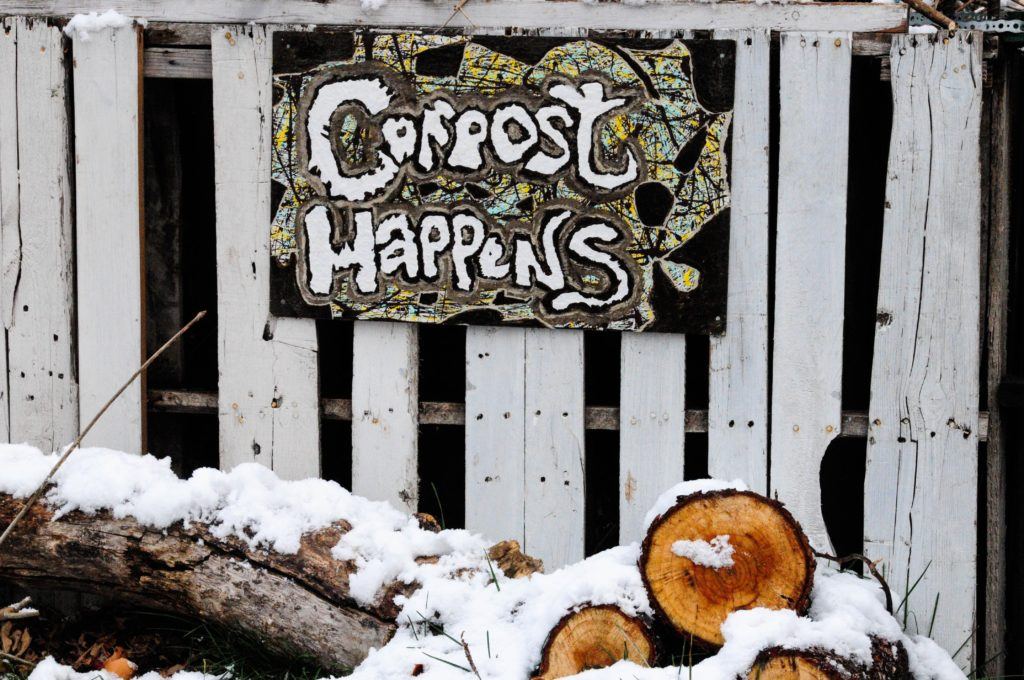
Methods for Indoor Composting
Having covered the basics of composting, it’s time to look at different ways composting can be achieved. We’ll begin by looking at methods for composting indoors, in your kitchen or elsewhere in the home. These methods do not require a garden, or even a lot of space. One or two people can easily compost within a single cupboard – perhaps under the kitchen sink. Even larger families living in small homes can find space for a composting system able to deal with all of their compostable waste.
However, indoors composting may still be useful for those with gardens or outdoor space; composting food waste before putting it outdoors can prevent any potential problems with attracting rodents or other pests to your outdoors composting system.
Small-Scale Food-Waste Composting
The simplest way to start composting is to place cardboard, fruit and vegetable scraps, and other compostable materials from your home into a small lidded bucket or other container. Actually, it is best to have two containers, so that one can be left to break down once full, with further waste put into the second in the meantime.
Ideally the container should not be airtight: if the composting turns anaerobic, it can start to really stink. Another consideration is choosing a receptacle that can have a tap fitted near the bottom, allowing excess liquid to be easily drained.
As a bonus, this fluid can be diluted with three parts water to make a nutrient-rich liquid feed for your plants.
Vermiculture
A composting container can also lend itself to vermiculture (vermicomposting): using specific worms to help create particularly fertile compost, rich in worm castings. This method can speed up the composting process, and is a great solution for small spaces.
Worms require a habitat (existing compost, cardboard, paper) and food (vegetative scraps). They will also need oxygen, and sufficient water (but not too much).
👉 Worms and wormeries are available to buy online. Alternatively, you can make your own wormery quickly and relatively easily with a few basic DIY skills. The worms you want are not regular earthworms but rather ‘red wrigglers’ or ‘tiger worms’; specialist compost helpers. As with a regular composting container, a wormery should ideally have a tap near the base to allow excess water to be easily drained.
Both of the methods described above can work well – but only for certain materials. We have briefly touched upon the things that you could compost, but here are some of the things that should be kept out of your compost heap:
- Meat and fish
- Citrus peel, onion, and garlic (at least not too much, and none if you are using worms, as the acidity can be harmful). Instead, use onion skins to make stock, and consider using citrus peel to make household cleaners.
- Dog or cat faeces. (Non-meat-eating pet faeces is fine in regular composting)
- Hidden plastic (such as often found in tea bags, for example).
Bokashi Buckets
Some things not suitable for traditional composting or a wormery, like meat and fish, could be composted using the bokashi fermentation method. Dairy products may also be better dealt with in this way, too.
Placing layers of special bokashi bran and food scraps into a bokashi bucket can accelerate the speed at which they break down into a valuable fertiliser. A simple five-gallon bucket is perfect for making your own bokashi. Add a tap to drain off the bokashi tea near the base of the bucket, and consider a second bucket so you can always have one to add to.
Speeding Up the Process When Composting Indoors
While using worms, or the bokashi method, consider also using a compost tumbler to further accelerate the process. This drum-shaped container turns to keep the waste inside well-mixed and aerated.
What to Do With the Compost If You Don’t Have a Garden
Those without gardens often ask what to do with compost once they have made it. The answer is simple: use your home-made compost to grow food inside your home. Even in the smallest spaces, it is possible to get imaginative and find space to grow at least a little of your own food.
Fill your pots and containers with the compost you create, and top them up to maintain fertility over time. Also consider making a compost liquid plant feed for indoor (or outdoor) plants:
- Fill one-third of a container (which has a lid) with home-made compost.
- Fill the rest of the container with water (ideally rainwater, if you have access to it).
- Stir the mixture thoroughly.
- Put the lid on the container and leave it to stand for a week or two.
- Strain the liquid through a sieve or a piece of old fabric.
- Water your house plants (or plants in your garden if you have one) with this liquid right away, or at least within a day or two, so the nutrients are not lost.
A large family will obviously produce more compost than a lone individual. If you do have more compost than you can use, you may be able to take advantage of a compost collection scheme in your area. But even where there is a system in place, you could also consider collaborating with friends or neighbours; if you do not need the compost you make, perhaps your neighbours will.
If you run out of space to grow food in your home, perhaps you could become involved in setting up a community garden in your area. One may even already exist. Alternatively, you may be able to talk to your local authority about the availability of allotments.
Methods for Outdoor Composting
If you do have a garden, regardless of size, it is unlikely that an inside composting system would cope with all the organic matter it produces. To make the most of your space, and ensure it remains beautiful and productive, composting organic matter is important. Even if you are already composting food waste indoors, consider how bulkier materials such as trimmings, fallen leaves, grass clippings could be made use of.
There are three main methods of outdoor composting:
Cold Composting
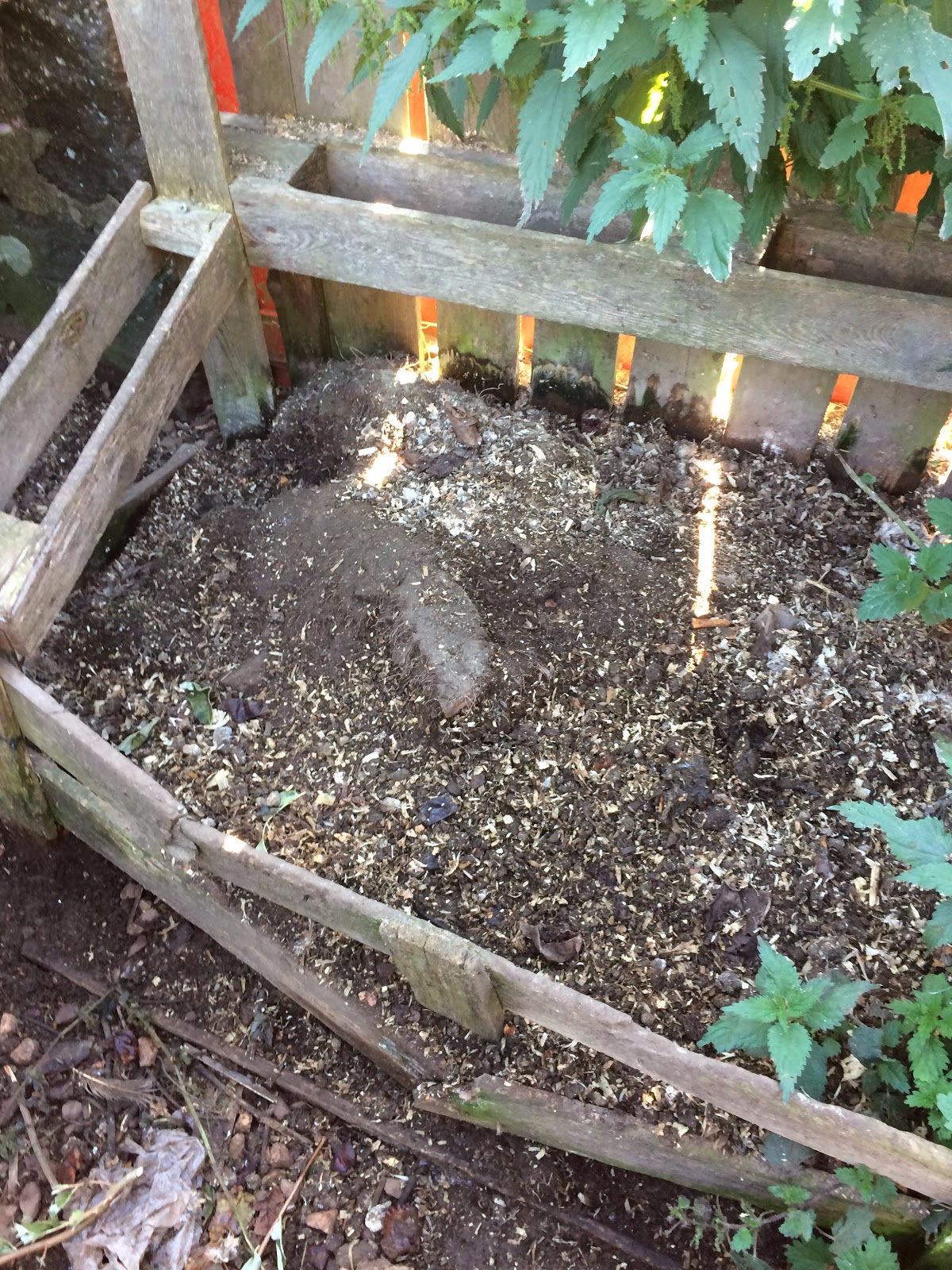
Cold composting outside is exactly the same as simple composting inside; the only difference is that the container will likely be much larger. Cold composting might take place in:
- A heap of materials in the corner of your garden
- A corral area created from wood pallets or other reclaimed materials
- Any barrel or bin (with adequate aeration).
When choosing a spot for your composting, it is important to consider how you use your garden, and what other elements it contains. For ease, it is helpful to locate it close to the sources of materials, and also to the growing areas where the finished compost will be used.
However, it is preferable to not place your compost close to doors or windows, or to an outdoor seating area. While aerobic composting is far less smelly than anaerobic composting, some smells are inevitable – and since outdoor heaps will often be uncovered, this is a more important consideration than for composting indoors.
Though an outdoors cold composting area will generally remain open to the elements, it is important to be able to cover it when necessary. Heavy rain can cause compost heaps to become waterlogged, washing away nutrients. In summer, a cover can conversely reduce moisture loss.
Once again, two compartments, bins, or sections will mean that one can be filled while the other fully matures.
Items to Avoid in a Cold Composting Heap or Bin
As with composting inside, certain items shouldn’t be put in your compost. In addition to those mentioned above, also avoid:
- Large branches (these will take too long to break down). Instead, use these as supports around your garden, or to make Hügelkultur beds (see below).
- Evergreen leaves (again, these will take too long to break down).
- Pine needles (these can be too acidic). 🌲
- Coal ash.
- Large lumps of food (cakes, bread, etc), which may attract rodents. (Consider composting food scraps inside before adding them to your heap if there is a problem with mice or rats in your area.)
Composting in Place
One of the easiest ways to return nutrients to the garden system is to simply layer organic matter on the soil surface, allowing it to compost in place. Sometimes called ‘sheet mulching’, these tiers of organic matter create a rich, friable planting medium. This mulch is similar to a forest floor, where leaves and debris falling onto the soil surface and are broken down in place, feeding the trees above and completing the cycle. Bacteria, fungi, and other soil biota will help to break down material into compost, which will be incorporated into the surrounding soil over time.
If you have a garden and would like to start new growing areas for planting foodstuffs, composting new garden beds in place can speed up the process of establishing your new and improved garden.
👉 A ‘lasagna bed’ is the process of building up a fertile growing area, in the same way that you would build up the layers in a compost bin or heap:
- Begin by creating the edging for your new bed or beds, and lay cardboard on the grass or soil within that boundary.
- Next, place a layer of twigs, dry leaves, straw or other ‘brown’ materials.
- Then add a layer of grass clippings, green leaves, and fruit and vegetable kitchen waste.
- Add further alternating brown and green layers to the desired depth.
- Finish with a top layer of compost or soil.
- Water well, then plant out your new growing areas.
The materials in a lasagna bed will break down over time in exactly the same way as in a composter or heap. In this case, however, the compost is already exactly where it needs to be.
Hügelkultur
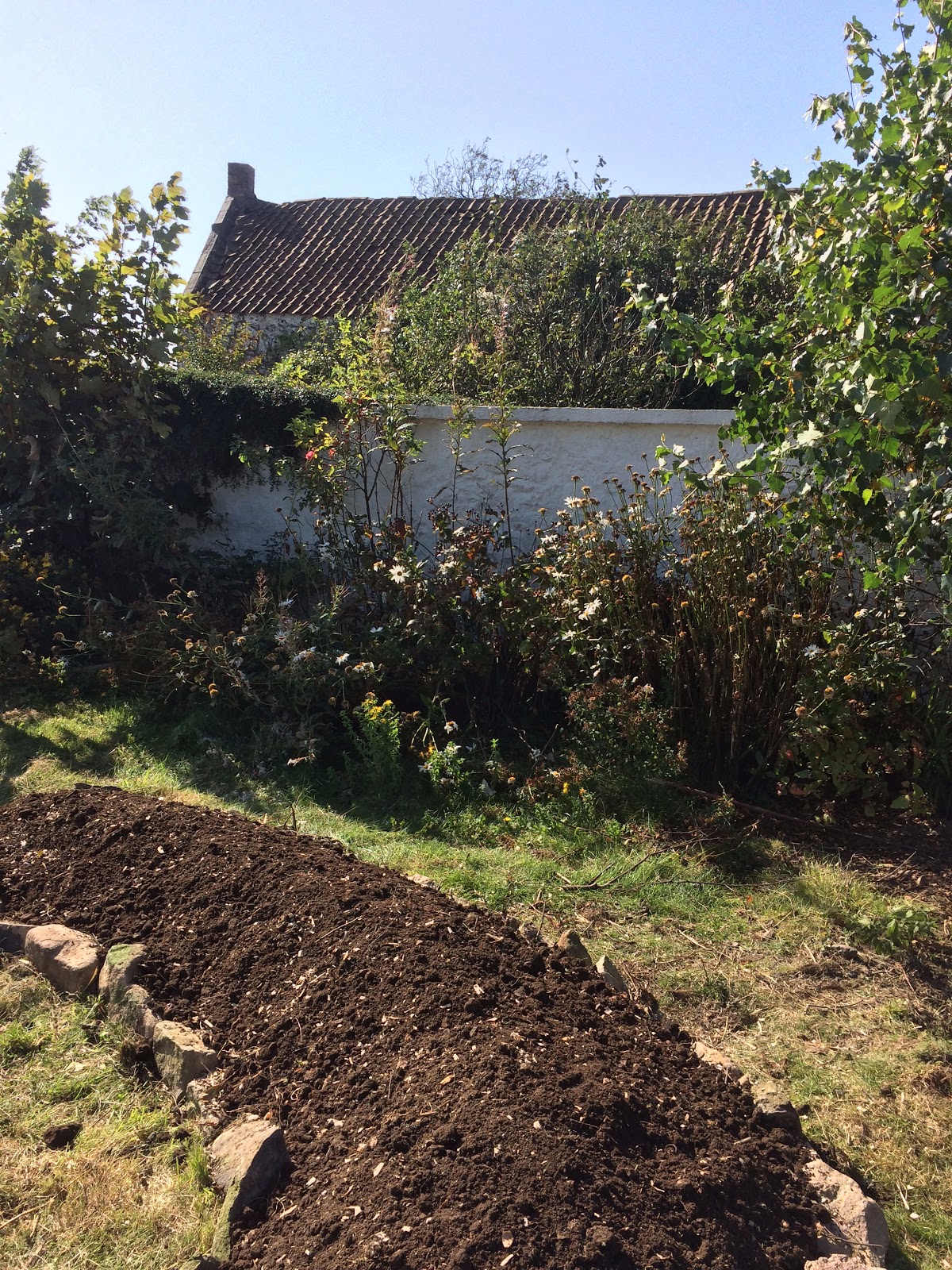
A variation on the theme of composting in place, Hügelkultur has the added benefit of utilising larger branches and logs from your garden. Hügelkultur (German for “mound culture”) is a gardening method which involves creating raised, mound-shaped growing areas.
Hügelkultur mounds comprise layered compostable materials, but rather than being laid on the ground, they are piled around a core of rotting wood, which holds moisture and promotes excellent fertility. These compost piles also provide variation in growing conditions, allowing creation of the right growing conditions for a wider range of plants.
Hot Composting
As the name suggests, hot composting involves decomposition at higher temperatures, in special hot composting containers, or with the use of straw/straw bales. Benefits include acceleration of the process, killing weed seeds, and an increase of kitchen scraps that can be safely dealt with. ⏳
Another way to deal with weeds, which can’t usually be added to compost heaps, is to process them into another type of liquid feed. Weeds that have set seed, or which would spread from root sections, can be killed thoroughly through submerging them in a bucket of water (with a lid, as the mix can really stink!). After being left to decompose, strain and dilute the resulting liquid by one to three, and water your plants with it (especially leafy plants that like a lot of nitrogen).
Troubleshooting a Compost System
Compost is too wet
Drain water from the container, add more brown material, or cover the compost to prevent waterlogging from heavy rain.
Compost is too dry
Add a little water to the container, or soak the outside of the heap (ideally with rainwater harvested on your property).
The compost stinks
It has likely become anaerobic. Turn or fork through the mix to increase aeration and to get a better mix of brown and green materials, check that ventilation is adequate, add more brown materials, and make sure you don’t add too much green in one go.
There are flies in the compost
Compost flies will only survive when the temperature is ideal, and they have a ready supply of food. Adding more browns, and making sure to always cover new green materials with brown ones, can dry out the heap a little, discouraging this problem. If you have fruit flies, try turning the heap for increased aeration; decomposition will speed up, increasing heat at the core and destroying eggs.
Big chunks haven’t broken down
Leave the compost longer; it may just need more time to decompose. Ensure conditions regarding moisture and oxygen are as they should be. Speed the process by adding more green, nitrogen-rich materials. (In an outdoors heap, nettles and comfrey are both excellent compost activators.) 🌱
By now, you should have a much better idea of how to create compost, and the best way to do so where you live. So, if you don’t already compost, now is the perfect time to start!
Featured photo by davide ragusa on Unsplash
Earth.fm is a completely free streaming service of 1000+ nature sounds from around the world, offering natural soundscapes and guided meditations for people who wish to listen to nature, relax, and become more connected. Launched in 2022, Earth.fm is a non-profit and a 1% for the Planet Environmental Partner.
Check out our recordings of nature ambience from sound recordists and artists spanning the globe, our thematic playlists of immersive soundscapes and our Wind Is the Original Radio podcast.
You can join the Earth.fm family by signing up for our newsletter of weekly inspiration for your precious ears, or become a member to enjoy the extra Earth.fm features and goodies and support us on our mission.
Subscription fees contribute to growing our library of authentic nature sounds, research into topics like noise pollution and the connection between nature and mental wellbeing, as well as funding grants that support emerging nature sound recordists from underprivileged communities.
